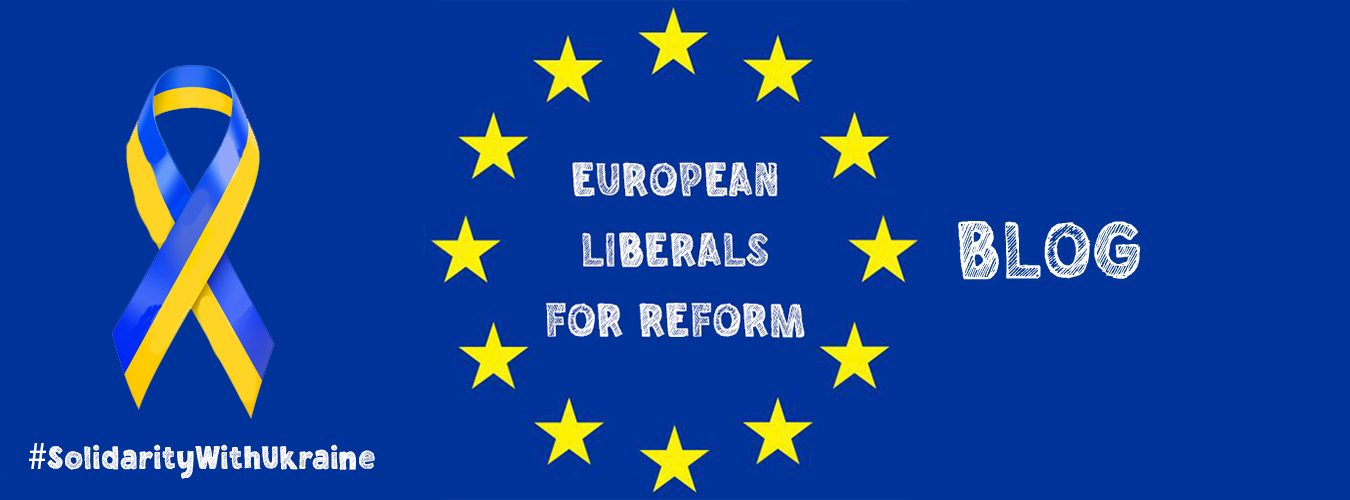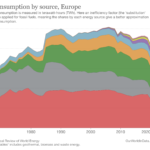JOHANNES EBER
This article was originally written for the “Good morning Europe” blog (www.goodmorningeurope.substack.com) by Johannes Eber. We were given permission to publish this article on the European Liberals for Reform blog.
The night train from Vienna to Brussels regularly stops in the German city of Aachen for 30 minutes. The locomotive has to be changed because of technical compatibility issues. So has the driver. He needs to speak Flemish.
This is what European rail traffic looks like in 2021. Still, there has been progress. In 1991 the European Commission implemented their first important measure concerning the rail sector. Currently, the fourth railway package is implemented.
Liberalising the market and increasing competition for passenger services is central. Rail operators are allowed to offer passenger services in any other member state. And a single agency, the European Union Agency for Railways (ERA), is now the entry point for the certification of rail vehicles and railway traffic operators all over Europe.
Hence, Italy’s Trenitalia has applied to ERA for a single safety certificate and vehicle authorisations to be able to also operate in France. French SNCF and Trenitalia recently entered the Spanish market.
The European Commission aims to increase rail traffic. Not least because of climate change. Rail carries 7 per cent of all passengers and 11 per cent of all goods in the EU but is responsible for less than 0.5 per cent of the bloc’s transport-related greenhouse gas emissions.
High-speed rail also plays an essential role as an alternative to short-haul flights. The EU Commission plans to double high-speed rail traffic across Europe by 2030 and triple it by 2050.
A single European rail area is the big goal. Two things, in particular, are required for achieving this:
- Interoperability and technical harmonisation to encourage the development of an integrated rail system
- Market opening and liberalisation of the rail services
To open the market, there have been discussions for decades about if (and if yes how) infrastructure management and service operations should be separated.
In Germany, the next federal government will maybe break up the railway company Deutsche Bahn. The Greens and pro-business and liberal Free Democratic Party (FDP), which look set to join the Social Democrats (SPD) in Germany’s next coalition government, favour breaking up the national railway. Since the SPD is opposing the move and the coalition talks continue (they aim to conclude by late November), it is unclear if this will actually happen.
Deutsche Bahn (DB) is 100 per cent owned by the federal government. The plan of the Greens and the Liberals could see DB’s infrastructure split off into a non-commercial public holding company, while regional, long-distance and freight transport operations would remain under one roof – and eventually privatised.
The Liberals argue that this could enable greater competition, and selling off profitable assets would pay off debts and free up money for investments. The Greens see Deutsche Bahn playing a pivotal role in climate policy and aim to double its passenger numbers by 2030.
How could a separation help to increase competition? How could this improve rail services? And what does separation mean anyway?
From an economic point of view, there is a crucial difference between tracks, signals and stations on the one hand and train operations on the other.
Tracks, signals, and stations are considered a natural monopoly because they are durable, immobile, and generally uneconomic to duplicate. However, train operations do not share these characteristics.
Since there can’t be competing companies in a natural monopoly, the state has good reasons to act as a single entrepreneur. And since train operations are not part of the natural monopoly, it makes sense to create competition amongst train operators.
The split-up (mainly called “vertical separation”) of old-style railway companies follows from this consideration. It enables those components of the industry with natural monopoly characteristics, mainly the track services, to be detached, thereby allowing train operators to compete against each other in the delivery of freight and/or passenger services.
Therefore, from a theoretical economic point of view, there is much to be said for a separation – railways in state hands, the rest privatised and in competition.
But how does it look in practice? Less clear.
The process of liberalising the railways in Europe started with the EU Directive 91/440 of 29 July 1991. This Directive required that open access to track be granted to train companies other than those that own the track.
By now, nearly all European countries have separated the management of track and associated infrastructure from the operations of trains. Some like Denmark, Sweden, the Netherlands and Finland, have created fully separated train and infrastructure companies from their state-run enterprises. Other countries, such as Germany, have created separate subsidiaries for infrastructure and track operations (DB Netz) while keeping ownership under a single holding company (DB).
Different variants of the separation are now allowed in the EU. From complete detachment of the provision of track infrastructure from the operation of passenger and freight trains, to installing third-party access arrangements so that track service may also be provided by an incumbent train operator. In some cases, the latter occurs with a holding company owing separate entities that provide the track infrastructure and train operations.
Initially, the EU Commission wanted to enforce a clear separation. Because of scepticism in most countries about the value of liberalisation, the latest EU regulations (Fourth railway package) permits tracks and trains to be owned by a single holding company.
Perhaps there is nothing wrong with this change.
Malcolm Abbott, an Associate Professor at Swinburne University in Australia, has published a paper (“Vertical integration, separation in the rail industry: a survey of empirical studies on efficiency“) that provides a global overview of the different studies that have been conducted on the effect of vertical separation on the rail industry.
The results of these studies are less clear, as one would initially think from an economic point of view. The reason: The benefits of separation (by creating competition amongst train operators) can be offset or overweight by the costs of that separation.
Because the separation creates the need for new mechanisms to resolve conflicts in the allocation of train paths, for ensuring standards and identifying who is responsible for delays. For instance, an operator cannot provide a reliable, high-speed passenger service if the infrastructure provider does not maintain the track to a high enough standard. Also, such a vertical separation may reduce incentives to the infrastructure provider to maintain investment in the network.
Some key findings of Abbott’s survey:
- The benefits of separation are more significant in freight transport – partly because passenger operations are usually highly dependent on public funding and the opportunities for purely commercial operations tend to be more limited.
- If management and scheduling costs are high, as are safety requirements, it can be challenging to make many gains from vertical separation.
- In densely populated environments, the costs of separation can be high.
- In several European studies, the reform and separation brought productivity improvements simply because so many of the national rail industries were starting from low productivity levels.
Although the evidence of the effects of vertical separation is mixed, there are some interesting conclusions from Abbott’s findings for Europe:
1) It is probably the liberalisation process of the European Union that has made rail travel more efficient and thus cheaper and better.
2) In metropolitan areas, the implementation of franchising arrangements in the passenger sector can be the best way to aim for fair prices and good service – with franchises preferring to operate on track they control.
3) On long long-distance train routes, competition on the rails may be the best option.
4) Competition in freight transport – already quite presentable – can probably be expanded further.
The independent operation of rail and service remains a pillar of improving rail travel in Europe. Because it is crucial that the rails provider is not interested in giving preference to certain users of these rails. There may be different ways of achieving this.
Author Profile

-
Founder of the "Good morning Europe blog" and Pixel economist
Guest author for European Liberals for Reform
Johannes' articles are originally written for the “Good morning Europe” blog (www.goodmorningeurope.org) and the Pixel economist (https://thepixeleconomist.substack.com).
We were given permission to publish his articles on the European Liberals for Reform blog.
Latest entries
Post Disclaimer
The opinions expressed by the author of this post do not necessarily represent the opinions and policies of ELfR.




